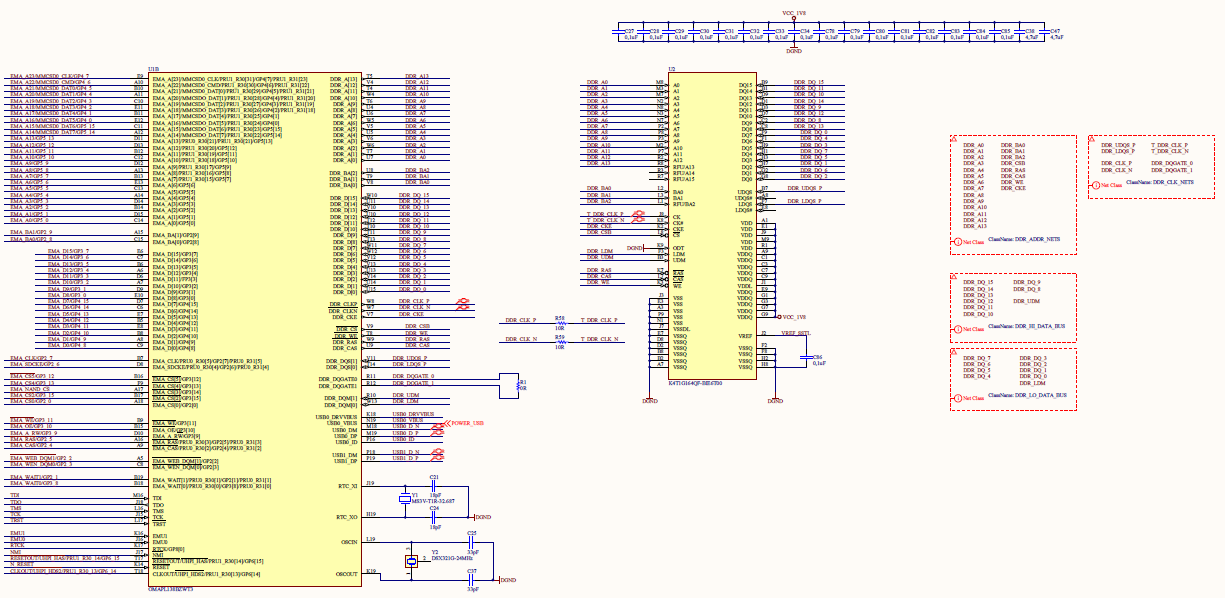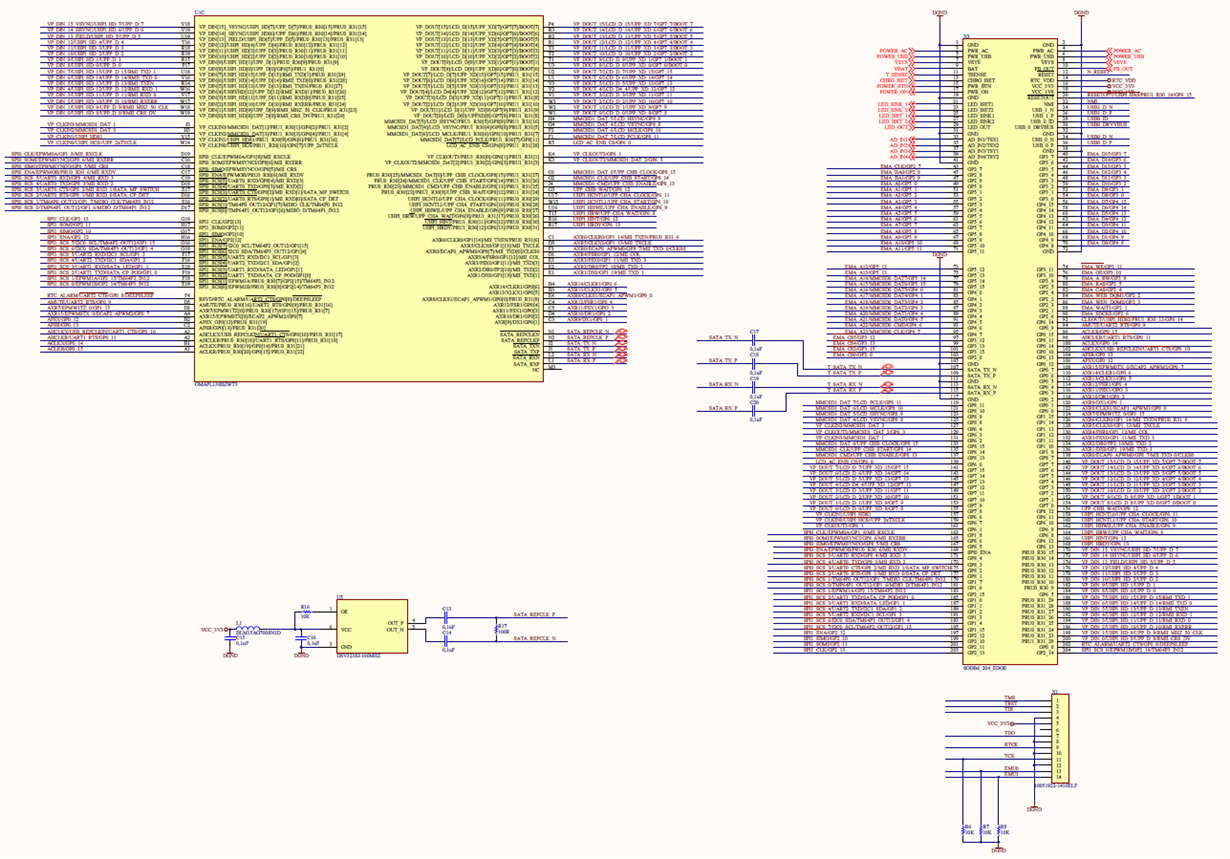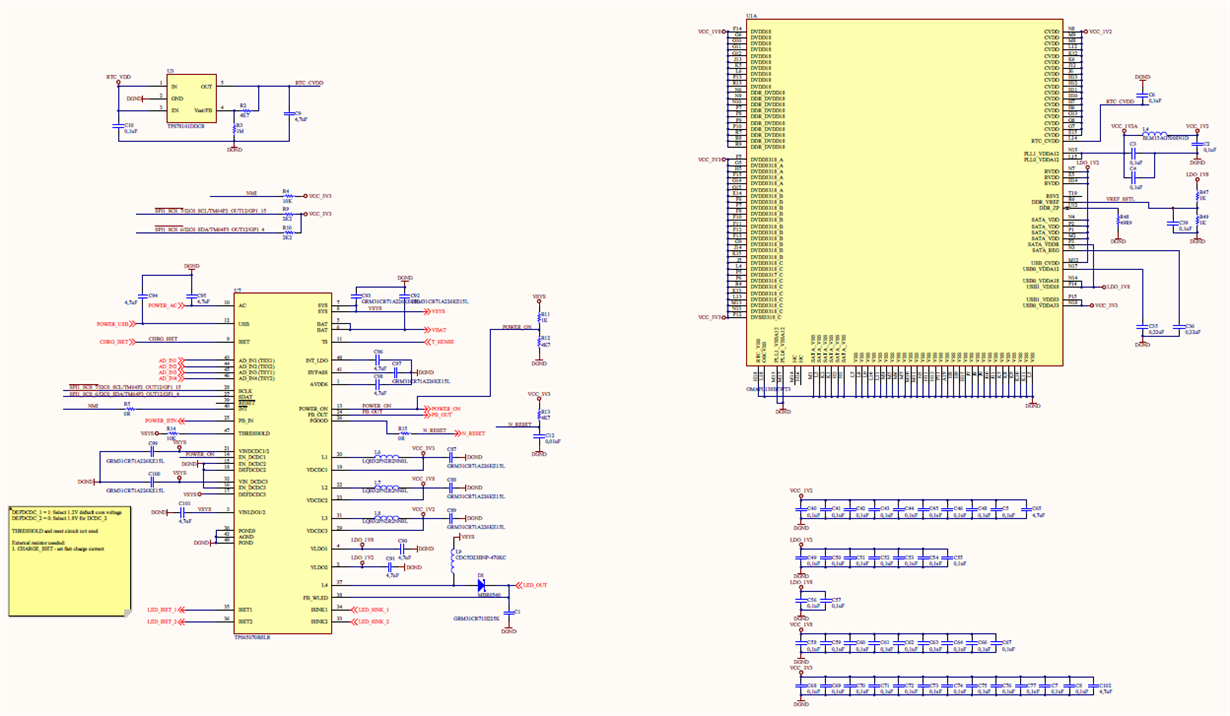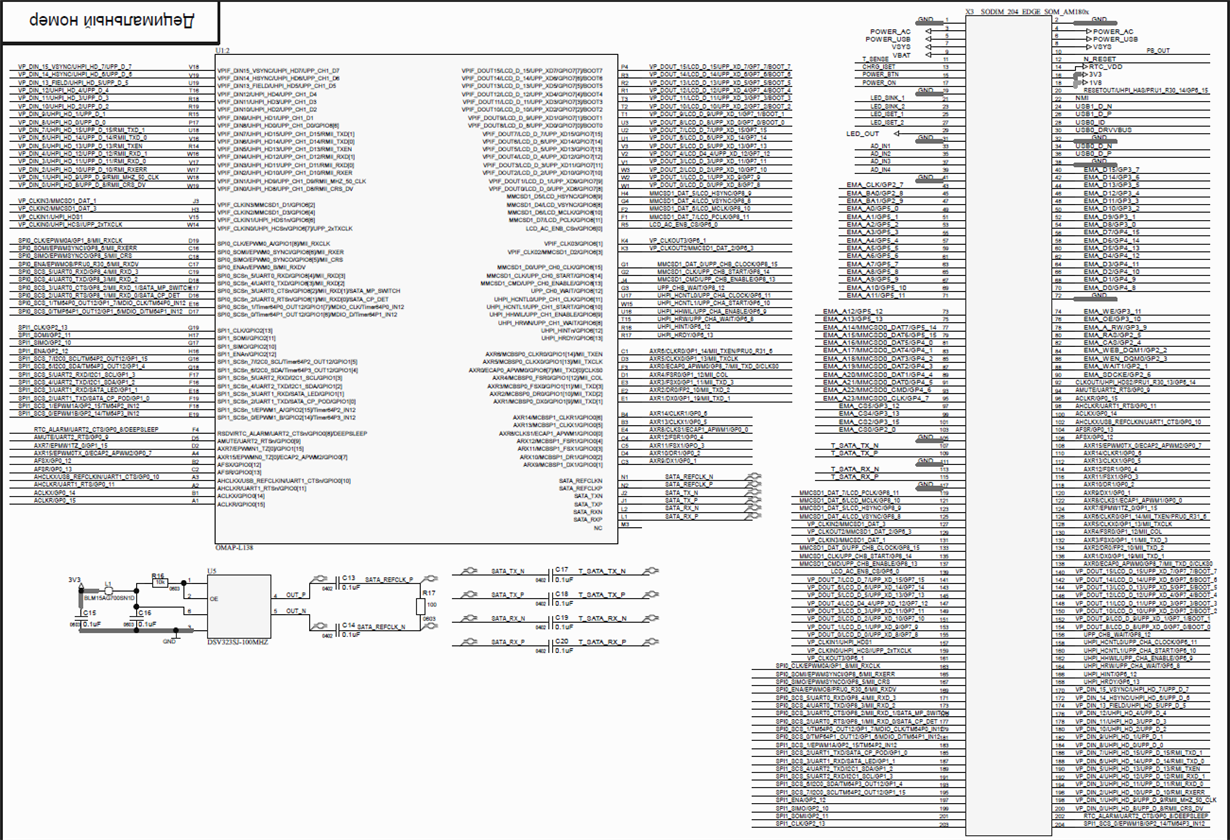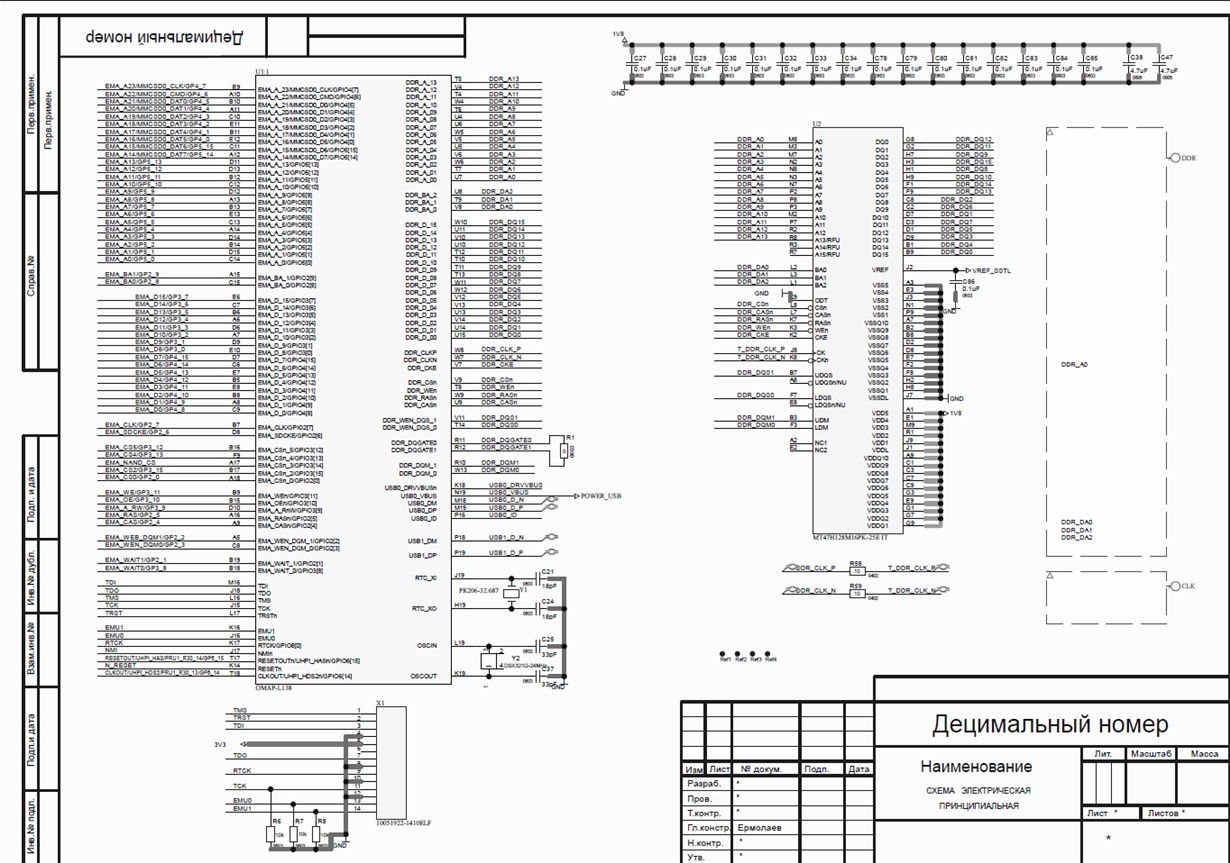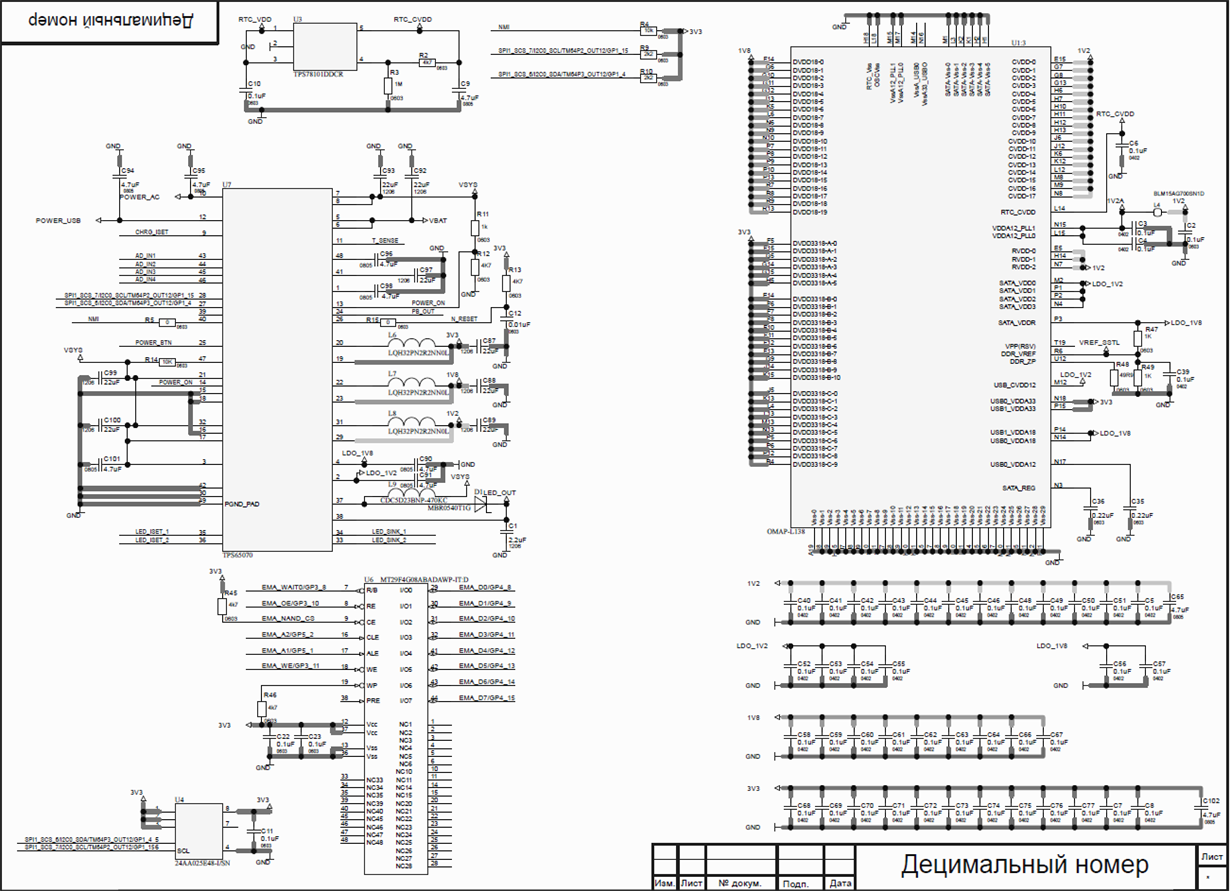Other Parts Discussed in Thread: OMAPL138,
I'm using a OMAPL138 processor board. I have 2 different board. The electrical circuit for the first board is on the pictures
The electrical circuit for the secondt board is on the pictures
I booting both boards the processor OMAP-L138_FlashAndBootUtils_2_40 utility by UART2 interface. I booting *.ais file to NAND flash. I download OMAP-L138_FlashAndBootUtils_2_40 utility from https://sourceforge.net/projects/dvflashutils/files/OMAP-L138/v2.40/.
Furser, I set the boot pins to UART2 boot mode. And I enter command in the console for erasing NAND flash: sfh_OMAP-L138.exe -erase -targetType OMAP-L138 -flashType NAND -p COM4 -v.
I see on the console log for first board
----------------------------------------------------- TI Serial Flasher Host Program for OMAP-L138 (C) 2017, Texas Instruments, Inc. Ver. 1.67----------------------------------------------------- [TYPE] Global erase [TARGET] OMAPL138 [DEVICE] NAND [NAND Block] 1Attempting to connect to device /dev/ttyUSB0...Press any key to end this program at any time.(AIS Parse): Read magic word 0x41504954.(AIS Parse): Waiting for BOOTME... (power on or reset target now)(AIS Parse): BOOTME received!(AIS Parse): Performing Start-Word Sync...(AIS Parse): Performing Ping Opcode Sync...(AIS Parse): Processing command 0: 0x58535901.(AIS Parse): Performing Opcode Sync...(AIS Parse): Loading section...(AIS Parse): Loaded 14100-Byte section to address 0x80000000.(AIS Parse): Processing command 1: 0x58535901.(AIS Parse): Performing Opcode Sync...(AIS Parse): Loading section...(AIS Parse): Loaded 1352-Byte section to address 0x80003714.(AIS Parse): Processing command 2: 0x58535906.(AIS Parse): Performing Opcode Sync...(AIS Parse): Performing jump and close...(AIS Parse): AIS complete. Jump to address 0x80000000.(AIS Parse): Waiting for DONE...(AIS Parse): Boot completed successfully.Waiting for SFT on the OMAP-L138... Target: BOOTUBL Target: DONE Target: SIZE Target: 00000001Erasing flash 0% [ ------------------------------------------------------------ ] 100% ████████████████████████████████████████████████████████████ 100% ████████████████████████████████████████████████████████████ Erase complete Target: DONE Target: DONE----------------------------------------------------- TI Serial Flasher Host Program for OMAP-L138 (C) 2017, Texas Instruments, Inc. Ver. 1.67----------------------------------------------------- [TYPE] Global erase [TARGET] OMAPL138 [DEVICE] NAND [NAND Block] 1Attempting to connect to device /dev/ttyUSB0...Press any key to end this program at any time.(AIS Parse): Read magic word 0x41504954.(AIS Parse): Waiting for BOOTME... (power on or reset target now)(AIS Parse): BOOTME received!(AIS Parse): Performing Start-Word Sync...(AIS Parse): Performing Ping Opcode Sync...(AIS Parse): Processing command 0: 0x58535901.(AIS Parse): Performing Opcode Sync...(AIS Parse): Loading section...(AIS Parse): Loaded 14100-Byte section to address 0x80000000.(AIS Parse): Processing command 1: 0x58535901.(AIS Parse): Performing Opcode Sync...(AIS Parse): Loading section...(AIS Parse): Loaded 1352-Byte section to address 0x80003714.(AIS Parse): Processing command 2: 0x58535906.(AIS Parse): Performing Opcode Sync...(AIS Parse): Performing jump and close...(AIS Parse): AIS complete. Jump to address 0x80000000.(AIS Parse): Waiting for DONE...(AIS Parse): Boot completed successfully.Waiting for SFT on the OMAP-L138... Target: BOOTUBL Target: DONE

